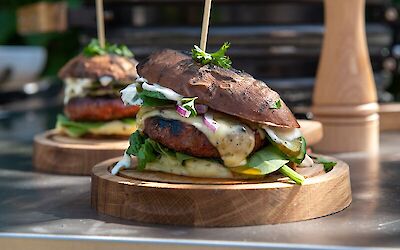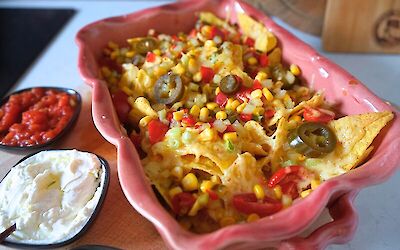From cow to cheese: how is cheese made?
Have you ever wondered how cheese is made? Then you are definitely not the only one. The fascinating process of cheese making is an age-old craft where milk is transformed into the most delicious cheeses we all know and love. Let's get straight to work and discover how we do it here the traditional way according to our own Henri Willig method.

Step 1: The basis of cheese making is collecting milk
The first step of cheese making starts, of course, with the cows. The whole process starts with the careful milking of the cows. The fresh milk obtained from this is the main ingredient for making cheese. But before cheese-making can begin, the milk undergoes a thorough check for quality and possible impurities. The milk is then cooled and taken to the cheese factory for further processing.
Step 2: Curdling the milk
Once at the cheese factory, the milk undergoes an important process called 'curdling the milk'. The milk is heated for a few seconds so that unwanted bacteria are destroyed and the cheese will later have a longer shelf life. After the milk is pasteurised and cooled, it is heated again. When the milk reaches 29 degrees Celsius, we add microbial rennet, lactic acid and calcium. Henri Willig uses only microbial rennet, a plant-based enzyme. As a result, the cheese is vegetarian. After the milk has been stirred well, it has to rest for another 30 minutes. Then the proprietary starter culture is added to start the cheese-making process.
Step 3: Moulding and ripening the cheese
Next, the milk is as thick as a pudding and the thickened milk can be cut. After a while, it can be seen that the liquid whey, is separated from the solid curd. After a while, it can be seen that the liquid part of the pudding separates from the solid. 10% of the pudding consists of this solid, called curd, which is white in colour. The liquid substance is whey, a product you can also drink. From the curd the cheese is eventually made. So 1 kilo of cow's cheese requires about 10 litres of cow's milk. Depending on the season, this is 8.5 litres per kilo of cheese for goat's cheese and 6 litres per kilo of cheese for sheep's cheese.
After obtaining the curd, it is then put into special cheese moulds to give the desired shape. Excess moisture is pressed out of the curd to make the cheese firmer. After moulding and pressing, the ripening process begins. The cheese is stored in a controlled environment, where time, temperature and humidity are carefully regulated. During the ripening process, Henri Willig's unique flavour develops.
The result - Enjoying delicious cheese!
Afterwards, the cheese is ready to be enjoyed! After ripening, the cheese is packaged and taken to the shops, ready to arrive at your doorstep. Each cheese has its own character and flavour profile. In short, cheese making is an artisanal process that requires a mix of precision, patience and love for the craft. Do not wait any longer and treat yourself to a tasty experience: discover Henri Willig's wide range and the convenience of ordering cheese online.
Is this article already making you hungry?
Check out Henri Willig's delicious recipes below.
Making your own smokey BBQ cheeseburger
Peel and crush 3 cloves garlic. Bring a medium pan of water to the boil and cook the garlic cloves with it. Cut the sweet potato lengthwise into 4 equal slices. Cook the sweet potato slices al dente for five minutes and rinse with cold water. Chop the cheese, red onion, cucumber and gherkin. Grill the sweet potato on one side on the barbecue or in a pan. Grill the burger as well. Remove half of the sweet potato slices and the burgers from the barbecue or pan and place them with the grilled side up. Place the cheese slices on top and grill again bottom-side down on the barbecue or in the pan. Finish the burgers by placing the spinach on top of the cheese, then the burgers with cheese on top and the rest of the garnish on top. Brush the sweet potato slices you will use for the top of the cheeseburger with crème fraîche and place them on top of the burger.
Spicy nachos with jalapeños
Nachos are simple, tasty and you can consume as a snack but also definitely as a meal! Spread the chips in an oven dish or on a baking tray. Grate a nice amount of cheese over the chips (200-400g can easily be done!). So to make spicy nachos, we chose the chilli cheese. Bake this for 6-8 minutes in the oven at 200 degrees. Remove from the oven and sprinkle the drained Kesbeke Mexican mix on top. This is fresh AND spicy thanks to the acid and jalapeños. Serve with the creme fraîche, salsa and guacamole. How to make the guacamole yourself? Ingredients: 2 avocados (ready to eat) 1 chopped small onion 1 finely chopped small tomato Salt and pepper to taste finely chopped coriander, a few sprigs to taste about 20 ml of lime juice And possibly a jalapeño pepper if you want it spicier. Halve the avocados,remove the seeds, spoon the avocado flesh from the skin and put it into a bowl. Mash the avocado flesh with a fork. You can leave bits in, to give it a bit more 'bite'. Season the avocado with some salt and lime juice. This also ensures that the avocado does not turn brown. Add the chopped tomato, onion and coriander and mix into the guacamole. Finally, also add the jalapeño, but taste before adding the whole jalapeño into it in between to make sure it's not too spicy. Enjoy!





